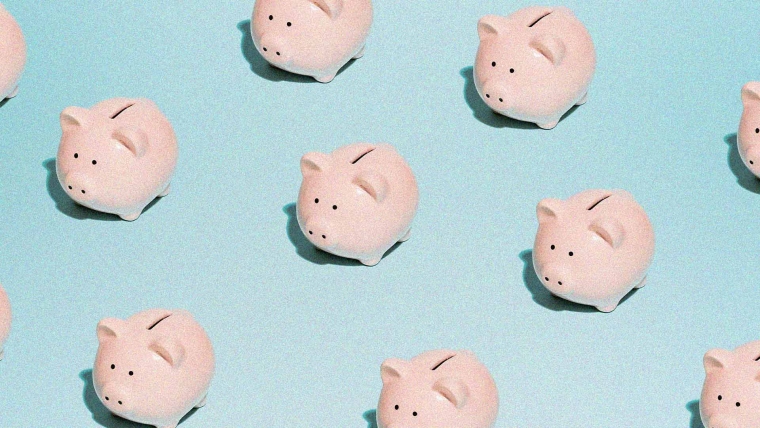
Over 9700 early KiwiSaver withdrawals were made in September, with members taking out around $234 million.
Data from the Inland Revenue Department (IRD) breaks down early withdrawals made by people buying their first homes and/or those experiencing financial hardship. KiwiSaver members can withdraw funds under both categories within the same period.
In September, KiwiSaver members made 9750 withdrawals totalling $234,120,918.
September’s figure is on the higher side - sitting closer to May which saw a total of $234,192,710 in withdrawals.
July hit a monthly record of $234,851,774 while August saw KiwiSaver members make 8750 withdrawals totalling $214,673,363.
In September, about 5530 withdrawals were made because of financial hardship, totalling $48,945,811 while 4230 withdrawals were made for first homes, totalling $185,175,106.
For the number of KiwiSaver fund withdrawals, IRD rounds up to the nearest 10.
People can withdraw money from their KiwiSaver when they reach 65, which is retirement age, but you can also apply for early withdrawals to buy your first house or because of financial hardship.
In September, there were 83,604 savings suspensions - this is when people temporarily stop their contributions. Of those, 1030 stopped their contributions due to financial hardship.
As of September, 805,709 members had their accounts closed or chose to opt out of KiwiSaver. Of this, 617,906 members had closed their accounts, while 187,803 chose to opt out.
Members usually have their accounts closed because of death, permanently leaving the country, retirement, serious illness or other reasons.
When it came to KiwiSaver scheme entry methods, 645,918 people were in default allocated schemes, 209,110 were in employer nominated schemes and 2,552,080 had actively chosen their schemes in September.
At 745,529 the 35 to 44 age demographic had the largest number of KiwiSaver members. The 25 to 34 age category follows with 737,494 members.
During September, 3837 people became active or provisional (you have eight weeks before you can choose to opt out) KiwiSaver members. There are a total of 3,415,767 active or provisional KiwiSaver members, IRD data shows.
KiwiSaver ends quarter close to $135 billion - Morningstar
Morningstar, an investment research company, recently released its quarterly KiwiSaver survey.
Its data director Greg Bunkall said: “KiwiSaver has become an adult. This is the first quarter, we have 18 years of performance since the start of the scheme."
“KiwiSaver assets increased, ending the quarter at close to $135 billion rising almost $5 billion this quarter due to a combination of strong market returns across the board, and inflows.”
Morningstar found most multi-sector KiwiSaver funds produced positive returns over the June quarter and when it came to default funds, all funds made it to around 5%.
The report says ASB had a strong quarter - three of its funds were at the top of their category and the other two multi-asset funds were in the top five performers.
“Other than ASB, no provider consistently has funds at the top of the category, although a couple of Kernel’s low cost multi asset funds had some strong showings."
The report says the highest performance in the three months to this quarter was Kōura Wealth’s clean energy fund returning 33.6%. The highest performance for the year to this quarter was Kōura Wealth’s Bitcoin Fund - returning 93.7%.
The report says past performance is not a guide to future performance.
“This year’s best performers can easily be next year’s worst.”
When it comes to the performance of a KiwiSaver scheme, the report looks at long-term returns.
It found over 10 years, the aggressive category average has given investors an annualised return of 10% followed by growth at 8.3%.
The balanced category was 6.8% while moderate was 4.1% and the conservative category was at 3.4%.
When it comes to market share, ANZ leads with nearly $23 billion followed by ASB, Fisher, Milford and Westpac.
“The five largest KiwiSaver providers account for approximately 66% of assets in our database, or around $88 billion dollars under management.
“We estimate that KiwiSaver providers will charge more than $1.1 billion [in fees] from KiwiSaver in the next 12 months to manage their KiwiSaver funds, at an average fee of around 0.82 of a cent per dollar invested.”
KiwiSaver rules
Following this year’s Budget, changes were made to KiwiSaver.
People aged 16 and 17 are now eligible for KiwiSaver so they can access employer and government contributions.
The Government’s contribution rate has gone down to 25 cents for each dollar a member contributes. This was previously 50 cents for each dollar, which meant receiving a maximum government contribution of $521.43.
To get the Government’s full contribution now, which is $260.72, people need to put in at least $1042.86 of their own money between July 1 to June 30 each year.
Alongside this, people with an income of more than $180,000 will no longer receive the government contribution.
Employer and employee contribution rates will increase to 3.5% from April 2026. This will move to 4% in April 2028. It’s currently at 3% - KiwiSaver members can choose to stay at the current 3% rate and still be matched at this rate by their employer.

We welcome your comments below. If you are not already registered, please register to comment
Remember we welcome robust, respectful and insightful debate. We don't welcome abusive or defamatory comments and will de-register those repeatedly making such comments. Our current comment policy is here.